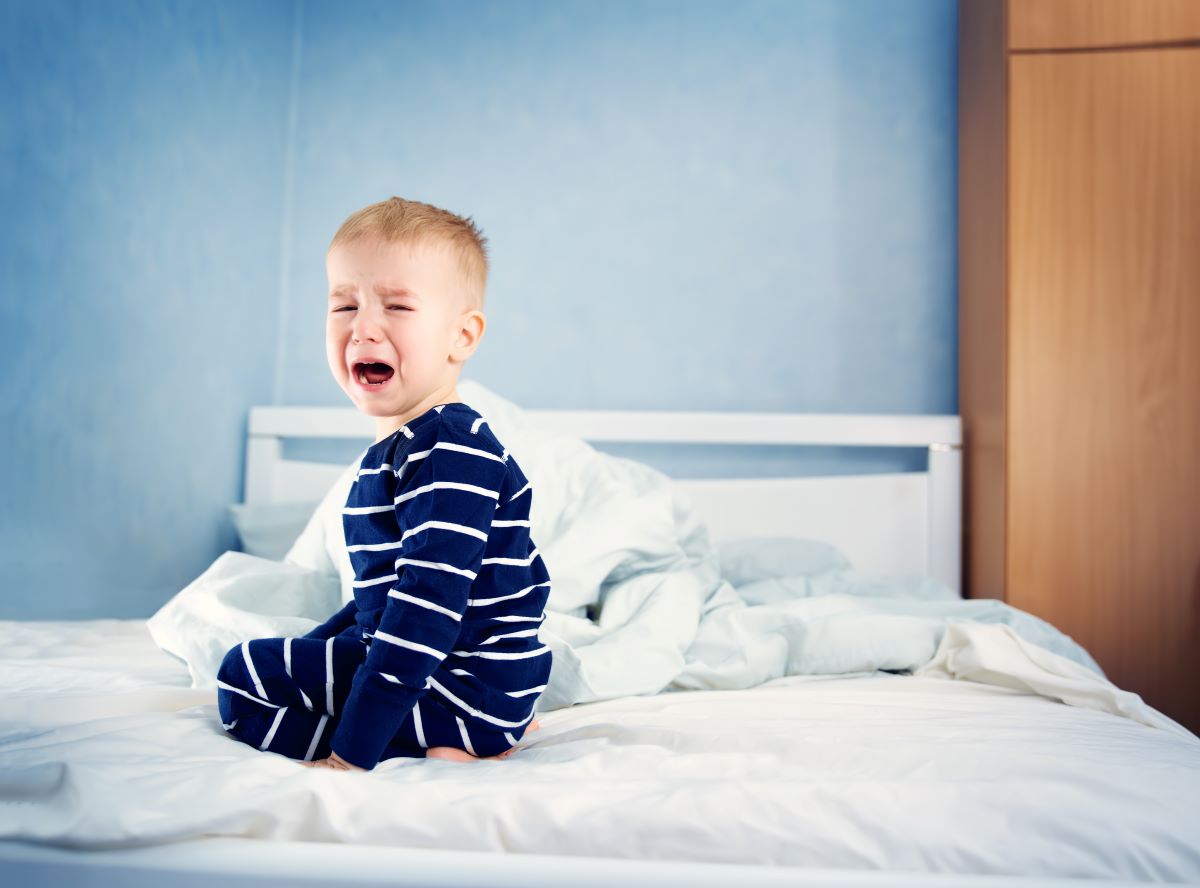Specialist Advice — 8 minutes
What are night terrors?
Night terrors are a type of parasomnia that mainly affect young children. These episodes of confusion and intense fear occur for no apparent reason during deep slow-wave sleep, usually one to three hours after falling asleep. Unlike a nightmare, sufferers are not aware of what they are doing and do not remember the experience when they wake up.

Night terrors are more common in children, peaking at 18 months of age, and tend to disappear on their own before adolescence.[1] Prevalence is estimated at 1 to 7% in children and 2% in adults.[2]
Causes of night terrors
The causes of this parasomnia are not clear, but since children’s night terrors usually disappear in adolescence, this sleep disorder is thought to be due to the fact that the child’s brain is not yet fully developed. It could also result from a genetic predisposition.
Certain factors can trigger night terrors, such as fatigue, sleep deprivation, intense physical activity, stress, fever or a sleep-related breathing disorder. In adults, episodes may also be triggered by alcohol, caffeine or stimulants.
Many adults with night terrors have a mood-related mental health problem, such as depression, anxiety or bipolar disorder. Night terrors can also be associated with a trauma, such as post-traumatic stress disorder.
What is REM sleep behaviour disorder?
Symptoms
The symptoms of night terrors can be very dramatic. The person may sit up in bed with eyes open and a look of intense fear on their face. They might shout or cry, argue with themselves or speak unintelligibly, or even get out of bed and walk around. These symptoms may be accompanied by sweating, rapid breathing and an elevated heart rate. Efforts to awaken or comfort the terrorized person are often futile, as they are not aware of what is happening.
Episodes usually last from one to five minutes, but sometimes up to 20 minutes, and then the person falls back asleep with no trouble. Since they have no memory of the episode, it is best to not awaken or interact with them, nor to talk about it when they wake up.
Diagnostic
Night terrors are usually diagnosed based on nighttime behaviours reported by a child’s parents or an adult’s bed partner. The healthcare professional will assess the person’s overall health and ask questions about sleep quality, stress levels, any trauma or mental health issues, and use of medications, alcohol and other stimulants. The physician can request a variety of tests to determine if a health problem is causing the night terrors. These may include a polysomnography to detect another sleep disorder.
What is sleepwalking?
Treatment
To control night terrors, it is important to remove the things that can trigger them. For example, try preventing fatigue by adopting a healthy lifestyle and sleep habits. If the night terrors are due to stress, trauma or a frightening experience, psychotherapy may be helpful. Creating a safe sleep environment to avoid injury is also essential, especially if the night terrors are accompanied by sleepwalking.
During an episode of night terrors, comforting gestures that do not wake the person (e.g. caresses, soothing words, etc.) can help the person return to a peaceful sleep. Otherwise, it is best to wait until the episode is over and make sure the person does not get hurt.
When a child has frequent episodes of night terrors, the method of scheduled awakenings can improve the situation. This involves waking the child each night, fifteen to 30 minutes before the average time the episodes occur, for about one month.
In rare cases when night terrors interfere with daily life, benzodiazepines or an antidepressant may improve the situation.
For professional support, we're here for you
We provide services that can help your doctor diagnose sleep disorders and determine the appropriate treatment.
- Polysomnography level 1-AASM (in laboratory)
- Home sleep test
- Sleep Care services
- Sleep hygiene program
- Online boutique
You have a question about an equipment? Chat online with our respiratory therapists.
Sources2
- PETIT, Dominique, Marie-Hélène PENNESTRI, Jean PAQUET et al. “Childhood Sleepwalking and Sleep Terrors: A Longitudinal Study of Prevalence and Familial Aggregation,” JAMA Pediatrics, Vol. 169, #7, pp. 653-658, 2015, https://jamanetwork.com/journals/jamapediatrics/fullarticle/2281574.
- MARKOV, Dimitri, Fredric JAFFE and Karl DOGHRAMJI. “Update on Parasomnias,” Psychiatry (Edgmont), Vol. 3, #7, pp. 69-76, July 2006, https://www.ncbi.nlm.nih.gov/pmc/articles/PMC2958868/.








